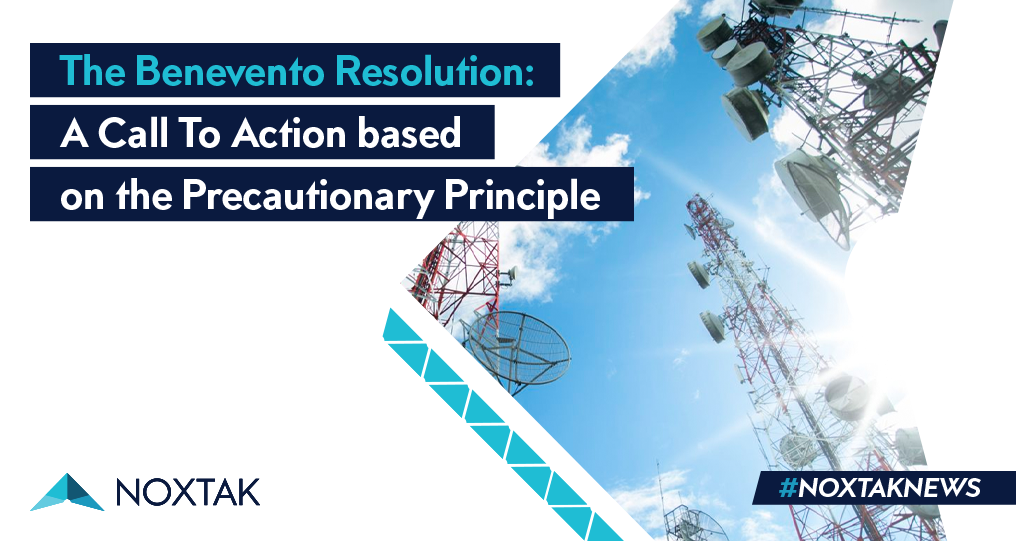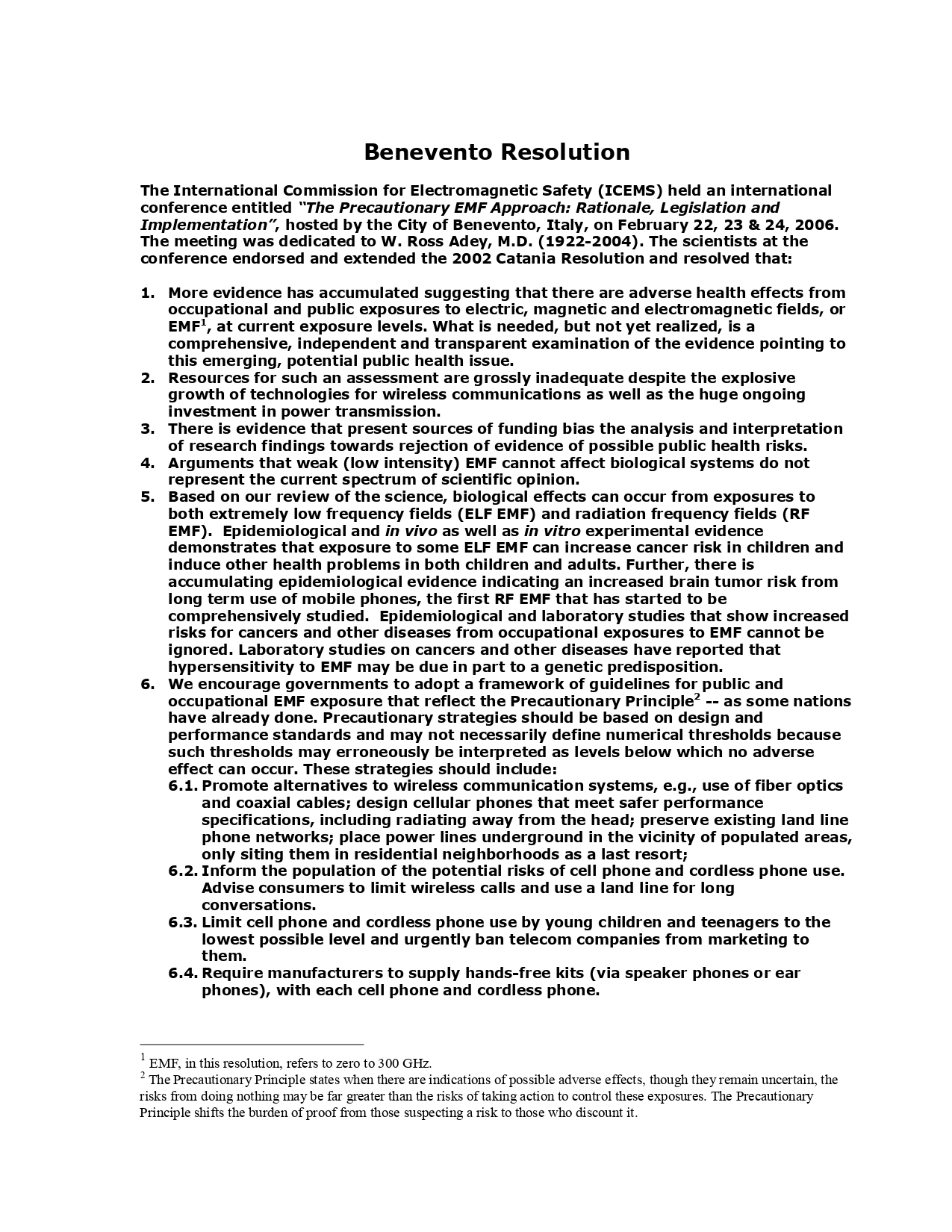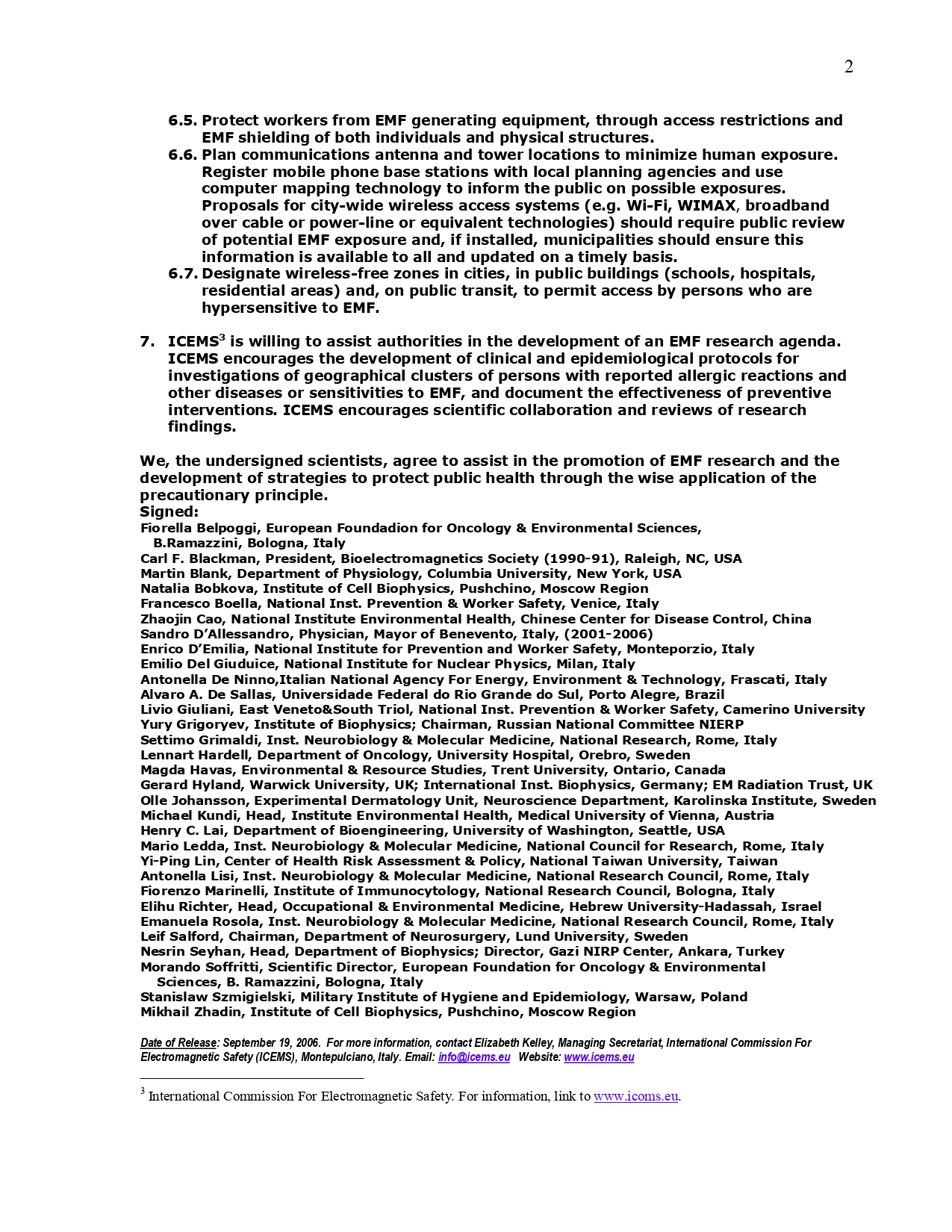CEO’s Office

Abstract:
In 2006, a group of scientists drew a road map to be followed by every government, organization, or institution to approach the problematic EMF issue. This resolution needs to be analyzed deeply, and we need to understand how much it means in this specific global context. In this article, we dig deeper into the Benevento Resolution and the impact it has had on many other studies after this scientific consensus.
The International Commission for Electromagnetic Safety or ICEMS released in 2006 a position statement committing ICEMS and the 31 scientists from 13 countries who signed the statement to promoting precautionary EMF policies and research to resolve uncertainties over health risks. The initiative grew out of a meeting held in Benevento, Italy, in February of 2006.
After several months of debate, 31 scientists just signed a consensus statement, called “The Benevento Resolution,” to advise the public and the scientific community of their firm belief that there are adverse health effects from current EMF exposure conditions. They urge more prudent use of EMF-emitting products and services. They specifically advise children and young teenagers to limit the usage of cellular and cordless phones and that marketing campaigns to them should be banned.
The scientists also called for a full and independent review of the scientific evidence that points to hazards from current EMF exposure conditions worldwide and for an independent, publicly managed research program to investigate critical issues of health and safety.
The Benevento Resolution was the first clear and definitive pronouncement made by the scientific community regarding EMF. In this resolution, many respected scientists had the opportunity to manifest evidence, worries, and all they considered potential risks around electromagnetic fields.
The Benevento Resolution


Previous
Next
A deeper analysis of the resolution and its impacts
The Benevento Resolution of 2006 affirms The Catania Resolution, adopted in 2002, that conveyed a similar scientific position. These resolutions apply the Precautionary Principle to encourage more protective safety measures to be employed in the design, manufacture, and standard-setting process for all EMF emitting technologies, calling for health assessments of current EMF exposure conditions for the general public and workers.
This resolution was an update to the consensus around EMF, stating that it represents an actual risk for public health in the long-term. This paper made a clear road map with the specific steps to follow and what had to be taken care in the future to approach this ever-growing problem. As remarked before, one of the main purposes of this consensus was encouraging local governments to work and legislate under the Precautionary Principle.
The Benevento Resolution is considered a clear statement of the scientific community that confirms EMF radiation has real risks, and they are not just associated to a specific profession, location, or occupation, but it is a global public health concern. This is one of the most relevant points of this resolution.
This paper is the base of many essential resolutions and studies that came after and opened a window to other organizations and the whole scientific community to continue investigating and speaking about this matter. After this, the Bioinitiative Report came in 2007, and many other reports followed. These resolutions will be analyzed in upcoming articles.
How is this resolution meant to be interpreted?
The Benevento Resolution has become an essential reference for current and upcoming EMF studies. The scientists declared that there is actual evidence to believe that EMF could become a public health problem in the long term and that we have to follow the Precautionary Principle without waiting any longer for more epidemiological studies. In other words, by the time all of these studies end, it could be too late.
In this document, the scientists also mentioned the importance of not setting the regulations just considering numbers. It is crucial to widen the criteria and view many more aspects that matter when it comes to radiation exposure. The governments also play a massive role in this. They keep encouraging governments and organizations to set regulations with a public exposure perspective, such as the one adopted regarding Laboral exposure. EMF should have a real place in governmental matters.
The Benevento Resolution should be known by more people and especially by more government officials, because is the very first step to understand how big is the EMF issue, what is the basing of these claims, and how it has been approached over the last decades. It’s not about a single study or opinion, neither about a research that has voided a previous one, it’s about reaching a real scientific consensus in which all the scientists that have participated in EMF researches along the years join in a common criteria to show the world the actual risks of EMF radiation exposure in all of its kinds (low frequency, high frequency, radiofrequency, and microwaves).
We have to understand that there’s a huge amount of biased papers out there, questioned researches, and countless studies funded by industries. This is definitely not about overriding some studies because of divided opinions; on the contrary, it’s about joining true scientific criteria for a bigger good.
The Benevento Resolution is then a pillar to build what’s next: create electrosmog-free spaces that electrohypersensitive people could freely transit and avoid further damages to more people, species, and the environment itself. This consensus was just the very beginning of what we have yet to research, unravel, and develop to avoid the next substantial global health crisis.

Joaquín Machado
CEO NOXTAK. EMF specialist and researcher. Advisor on green technologies, IoT, and smart cities.
